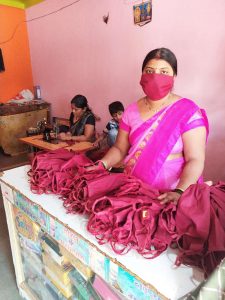By Yogesh Ghore and Farouk Jiwa
As the world responds to the Covid-19 pandemic, a pressing and immediate issue is the supply of personal protective equipment (PPE) for the front-line health workers who are working to save the lives of others. Facemasks are an essential part of the PPE. Once the outbreak spread, the demand for masks surged globally.
By mid-March 2020, the demand was such that in the United States the states were bidding against each other to purchase as many masks are possible leading to the price increase of more than 10 times the usual cost of $0.60 to $0.80 apiece. This led to the US federal government initiating the Defense Production Act allowing the military to spend $133 million to increase the mask production by over 39 million masks. It will take 90 days to reach this goal and will involve the country’s leading companies getting involved in the production.
Here in Canada, the government set aside $2 billion to procure PPEs from around the world. Canadian diplomats, provinces, hospitals, and even individuals are using their connections creating made-for-Canada plan for mass production of masks and other PPEs in China. Deputy Prime Minister Chrystia Freeland who said, “It is really a Wild West when it comes to buying medical supplies right now”, highlighted this global race for PPEs.
Now contrast this response with that of an emerging economy, India, with a fragile healthcare infrastructure (0.7 hospital beds per 1,000 population as compared to 2.9 for the US, and 0.8 physicians per 1,000 population as compared to 2.6 for the US). How is India with a population of 1.3 billion people addressing the surging demand of masks?

Self Employed Women’s Association (SEWA) in India, a long-time partner with Coady Institute at St. Francis Xavier University, has been working with rural women in India to produce and deliver more than 20 million masks during the Covid-19 pandemic.
The answer is coming from an unusual and unexpected place: poor women, most of whom are living in the rural economy, and probably never heard of such masks before. The Self Employed Women’s Association (SEWA) in India, a long-time partner with Coady Institute at St. Francis Xavier University, has been at the centre of this solution. As early as March 18, before India went into a national lock down, about 500 women from SEWA learned how to make the masks and produced half a million masks and distributed to the association’s membership of more than 1.7 million women workers from the informal sector.
Similarly, from across the 24 states of India a little more than 65,000 rural women, part of around 15,000 self-help groups, produced more than 13 million masks in the last two weeks of March. That too at a fraction of what the US government is going to spend. As per the last count the number of masks had reached 20 million by April 12. Given that these groups are spread across the length and breadth of the country, this decentralised production model is going to involve less logistics and time for delivering it to the local hospitals and customers. This work demonstrated by women has also inspired a national #Mask India movement.
The groups are making sure they meet quality standards and while these masks may not be at a level to replace the N-95 masks, they are still filling an important gap in the immediately supply of masks. A key take-away here is the leadership shown by rural women micro entrepreneurs to mobilise their social capital to complete the complex task of producing and distributing millions of masks across the country at a short notice, and in a lockdown situation.
Close to home in Nova Scotia local small businesses are responding swiftly as well. Steinhart Distillery in Arisaig, NS, completely switched their entire production line to make hand sanitizers that also went into short supply as early as March. There are other local distilleries doing the same across the province. Other local businesses shifted production to make face shields, masks, and scrubs in response to the global pandemic.
There is no either-or solution in the fight against the coronavirus. The efforts of the governments will have to be supported by others as “we are all in this together”. The stories of community innovation in times of crisis, as highlighted here present an opportunity to look at the role of citizens in shaping their own development beyond the current crisis. In other words, how can we use the current opportunity to create a new ‘normal’ where the communities and workers are at the center of the new economy? Or is this going to be a blip instead of a transformative moment for new ways of working?
Ghore is a senior program staff member and Jiwa is a program associate at Coady Institute. They co-facilitate Coady’s programs in the Inclusive Economies thematic area including the Livelihoods and Markets, Social Enterprise, and Future of Work programs. Coady Institute located at St. Francis Xavier University has been working with community-based organisations like SEWA for the last 60 years supporting leadership and knowledge building that fosters innovation and entrepreneurship at the community level. With new partnerships, including that with the StFX’s Centre for Employment Innovation, Coady is connecting global and local by providing opportunities to strengthen learning and innovation internationally and here in Nova Scotia. Many of Coady’s graduates (more than 9,000 change leaders/social entrepreneurs from 133 countries) and partners across the world are at the frontlines during this global pandemic.
